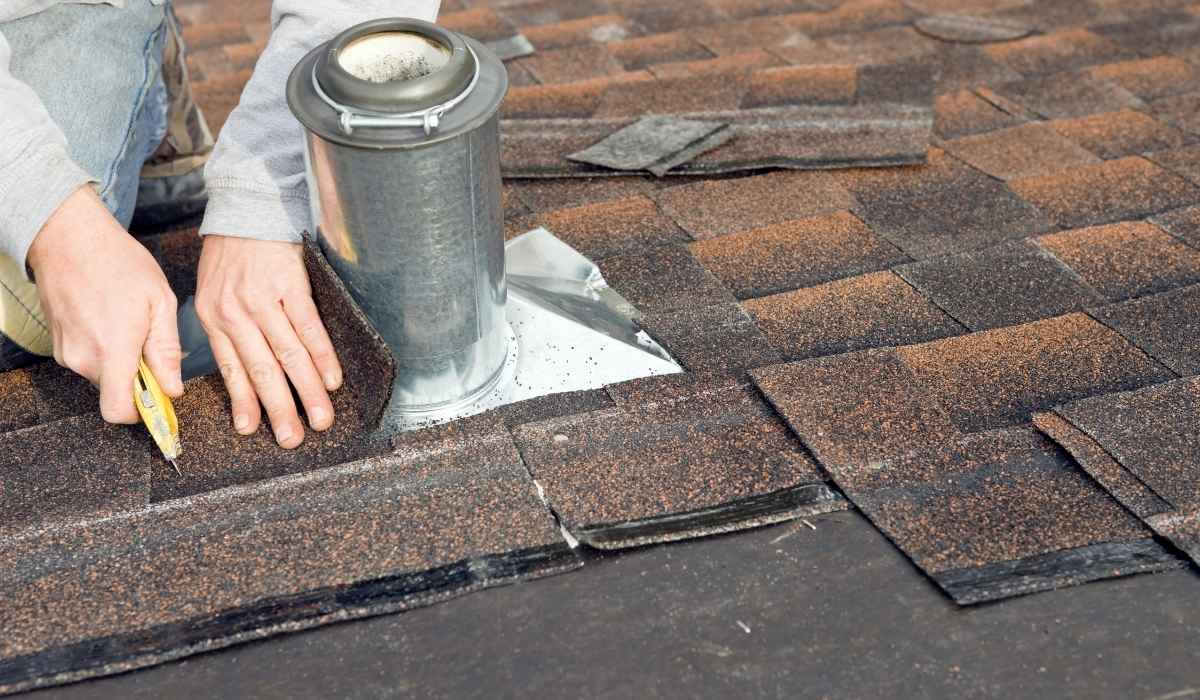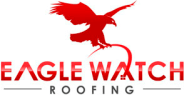Most Common Roof Parts Used in Newnan, Georgia
When it comes to your home’s roof, there’s much more to it than just shingles.
A roof is a complex structure composed of many different components, each with its role in keeping your home, family, and belongings safe.
And just like people, every roof is unique. However, there are a few key elements that remain consistent across all roofs.
Today, I’m going to walk you through the most common roof components used by homeowners in Newnan, Georgia.
Whether you’re looking for a new roof, a repair, or just want to appreciate its structure, you’re in the right place.
What Components Make Up Your Roof?
Every layer of your roof plays a crucial role in protecting your home. Let’s break down these components and see why each is so important.
Drip Edge
Picture a metal strip that runs along the edges of your roof — that’s your drip edge. It’s typically made of copper, aluminum, or steel.
This small but crucial piece guides water away from your fascia, preventing erosion and helping to keep water from seeping underneath your shingles.
Drip edges are designed to be durable, non-corrosive, and strong enough to handle heavy rain, strong winds, and even snow. Without a proper drip edge, your home’s structure could suffer from water damage over time.
Roof Deck
The roof deck forms the base or framework for your entire roof — it’s kind of your roof’s skeleton.
Often made from OSB or CDX plywood, typically in 4’ by 8’ sheets with a thickness of ½ inch, it forms a strong platform for everything else that goes on your roof.
If your deck is rotting or weak, adding a new layer of shingles without addressing these problems can compromise your roof’s stability. So it’s crucial for your contractor to inspect it thoroughly first.
Roof Underlayment
Before your shingles go down, a water-resistant underlayment is placed directly over the roof deck.
This barrier helps protect your home from rain, ice, or heavy snow.
Today, many homeowners opt for synthetic underlayments instead of traditional felt.
The synthetics are lightweight, strong, and less prone to tearing — adding an additional layer of robustness to your roof’s defenses.
Ice and Water Shield
Installing ice and water shield is a key step in protecting your home from leaks. This rubberized material is placed in vulnerable areas, such as:
✅ Valleys
✅ Skylights
✅ Vents
✅ Chimneys
✅ Transitions between wall and roof
✅ The lower slope near the eaves
Some insurers even reduce homeowners’ premiums by up to 27% when ice and water shield is installed across the entire roof — that’s a win for both your wallet and your peace of mind.
Roof Drip Edge Flashing
While the underlayment helps keep water out, drip edge flashing guides water safely away.
This metal flashing — typically made from copper, aluminum, or Galvalume — is installed along the eaves and rakes.
It prevents water from seeping underneath shingles and causing damage to your fascia, soffit, or framing.
Pipe Vent Flashing — Sealing Penetrations
Every home has pipe vents that pass through the roof — for bathrooms, water heaters, or other appliances.
Proper flashing forms a watertight barrier around these penetrations.
The most commonly used materials for pipe vent flashing include:
✅ Plastic with rubber gaskets
✅ Steel with rubber gaskets
✅ Lead pipe boots — less maintenance, but sometimes prone to chewing by small creatures
✅ Neoprene pipe boots — flexible, convenient, and reliable
Installing flashing with a secondary layer of ice and water shield underneath adds further protection against leaks.
Mechanical Vent Flashing — Proper Airflow for Your Attic

Ventilation is key for your attic’s health. Without proper airflow, your attic can become a mating ground for mold and mildew — and your shingles may deteriorate faster due to excess heat.
Vent flashing is used for:
✅ Water heaters
✅ Bathroom fans
✅ Dryer vents
✅ Attic fans or power vents
✅ Ridge vents, gable vents, or whirlybirds
Some vents even carry air directly outside through a side wall instead of upward. Proper installation helps keep your attic cool and well-ventilated in all seasons.
Chimney, Skylight, and Wall Flashing — Preventing Leaks
Flashing is a crucial barrier against water infiltration.
Whenever there’s an intersection — a wall, a chimney, a dormer, or a skylight — metal flashing helps keep water from seeping in.
Usually made from copper, aluminum, or Galvalume, this flashing guides rainwater safely down toward the gutters or away from vulnerable areas.
Proper flashing is a small investment that prevents big problems.
Eave — The Edge That Extends Beyond Your Wall
The eave is the small overhang that extends past your wall.
This isn’t just a stylish architectural feature — it’s a crucial way your home is protected from excess water, pests, and structural stress.
The eave helps move rainwater safely away from your home’s foundation.
Roof Ridge — The Highest Point
Running along the length of your roof, the roof ridge forms its highest point.
This intersection lets warm air escape, reducing pressure and extending your roof’s lifespan.
Ridge and hip shingles are designed to provide a finished look while retaining functionality.
Valleys — Where Water Gathers
Where two slopes meet, you’ll find a valley.
This is a vulnerable spot where water naturally collects and drains down toward the gutters.
Proper installation — and careful flashing — is crucial to avoid leaks.
Shingles — Durable, Beautiful, Reliable
Lastly, we discuss about shingles — the most visible barrier protecting your home. Asphalt shingles remain a popular choice due to their:
✅ Durable, cost-effective design
✅ Variety of colors and styles
✅ Ability to perform under a range of climate conditions, from heavy rain to strong winds
Shingles typically consist of:
✅ A base mat (fiberglass or organic)
✅ A layer of waterproof asphalt
✅ Mineral granules for color, texture, and additional UV resistance
Together, these components create a strong, protective barrier against the elements.
Summary — All the Parts That Keep Your Home Safe
Installing or replacing a roof is much more than just adding new shingles. From the underlayment to the flashing to the vents, each piece plays a crucial role in keeping your home strong, healthy, and sheltered.
If you’re a Newnan, Georgia, homeowner, understanding these components can aid you in making the best decisions when it’s time for repairs or a new installation.
✅ If you’re looking for a new roof, repairs, or just peace of mind, a team of expert Newnan roofing contractors is here to help.
✅ We’re passionate about delivering the highest standards in materials, workmanship, and service.
✅ Your home is your sanctuary — we’re here to keep it that way.
Eagle Watch Roofing opened its doors in 1999, initially focusing on home improvement services like roofing, siding, and window replacements.
Over time, we have chosen to specialize in roofing and gutters, providing our customers with the highest level of expertise and care.
The team’s knowledge runs deep — our father-and-son owners collectively bring over 40 years of industry experience.
They’re HAAG-engineering certified roof inspectors, as well as GAF, Owens Corning, and Certainteed certified roofing installers. This expertise is shared directly with every team member, ensuring you’re always in expert hands.
At Eagle Watch Roofing, we know what we’re doing, and we’re proud to show it.
FAQs
What’s a drip edge, and why is it so crucial for my roof in Newnan?
A drip edge is a piece of metal flashing that’s installed at the edges of your roof — typically along the eaves and rakes — to guide water away from your home’s structure. It prevents water from seeping underneath your shingles and causing damage to your roof deck, or even your home’s foundation. Without a properly installed drip edge, heavy rain can undermine your roof’s stability over time.
What’s a roof deck, and how does it affect my new roof?
The roof deck forms the base or “foundation” for your entire roofing system. It’s normally made of OSB or CDX plywood. If your deck is weak or rotting, adding new shingles directly on top can compromise the structural integrity of your new roof. It’s crucial to repair or replace any damaged decking to keep your home safe and sheltered.
Why do I need underlayment underneath my shingles?
The underlayment serves as a another barrier against water infiltration. It helps protect your home from rain, ice, or strong winds that may drive water underneath your shingles. Currently, many homeowners opt for synthetic underlayment due to its lightweight, resistance to tearing, and ability to provide strong, long-lasting protection.
What is ice and water shield, and do I need it in Georgia?
Ice and water shield is a rubberized material placed in vulnerable areas of your roof —like valleys, chimneys, vents, and lower slopes — to provide additional protection against water infiltration. While freezing is less frequent in Georgia, heavy rain and strong storms can create high-risk areas for leaks, making ice and water shield a smart investment.
What’s the role of a drip edge flashing?
Drip edge flashing helps guide water away from your home’s fascia and prevents water from seeping under the shingles. This metal trim adds an additional barrier against heavy rain, extending the life of both your roof and your home’s structure.
What’s pipe vent flashing, and why is it needed?
Every home has pipe vents that poke up through the roof — typically for bathrooms, laundry rooms, or other internal services. Pipe vent flashing forms a watertight seal around these penetrations. Without proper flashing, water can seep into your attic and cause extensive damage over time.
Are mechanical vents really that important for my attic?
Yes — proper attic ventilation helps keep your attic cool in the summer and prevents excess moisture from causing problems in the winter. This can aid in extending your roof’s lifespan, reducing energy bills, and improving your home’s overall health. Types of mechanical vents include gable vents, whirlybirds, power vents, and off-ridge vents.
What is a roof valley, and why should I pay close attention to it?
A roof valley forms where two slopes of a roof come together, creating a trough that guides rainwater down toward the gutters. Proper installation is crucial here to avoid water pooling, ice dams, or eventual leaks. This is a high-risk area for many homeowners — which is why it’s a key consideration during a new roof installation.

